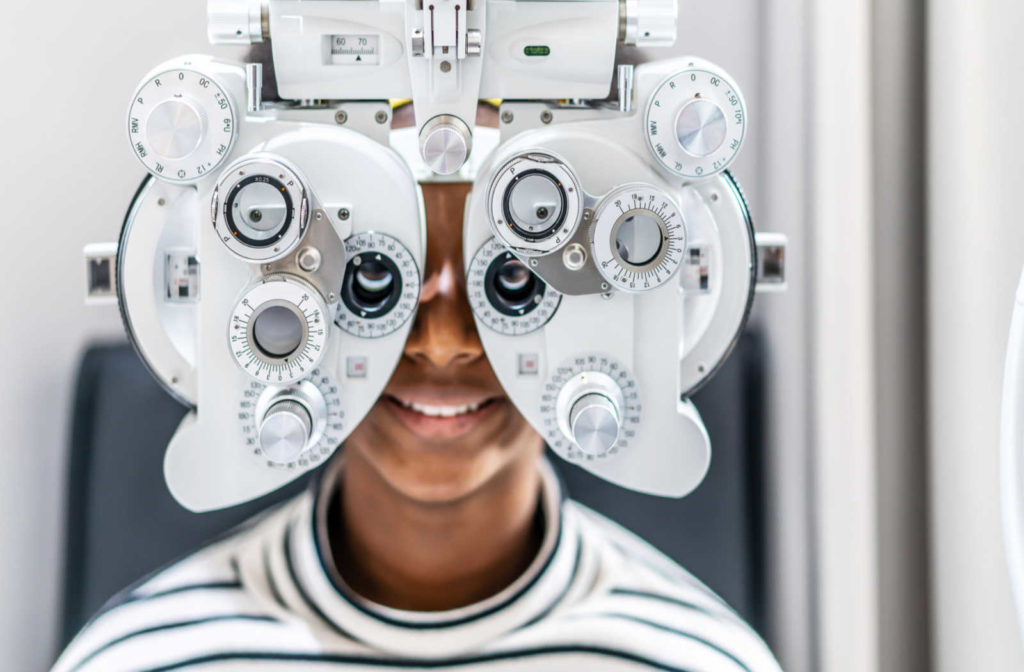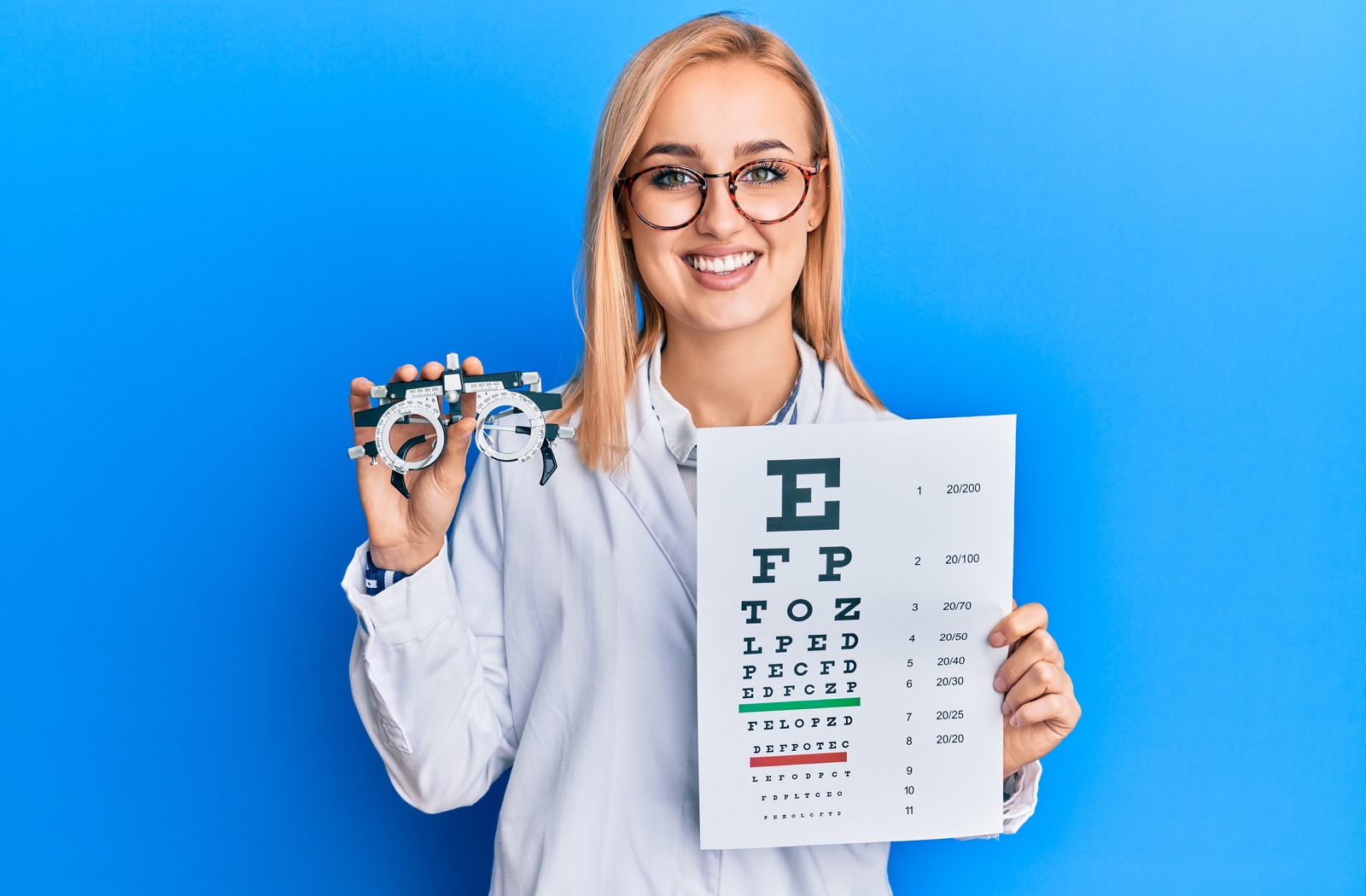Experience Personalized Care with Opticore Optometry in Chino
Experience Personalized Care with Opticore Optometry in Chino
Blog Article
Discovering the current Technical Innovations in Optometry and What They Mean for Eye Doctors
From the precision of Optical Comprehensibility Tomography to the nuanced understandings offered by AI-driven diagnostic devices, these innovations are setting new requirements in person assessment and treatment. As these developments penetrate the technique, eye doctors are encountered with the challenge of embracing these tools to improve individual outcomes.
Technologies in Diagnostic Tools
Advancing the area of optometry, developments in analysis tools have reinvented the means eye treatment specialists assess and diagnose aesthetic problems and eye problems. The previous decade has seen significant technological developments, allowing more comprehensive and accurate analyses. Optical Comprehensibility Tomography (OCT), as an example, supplies high-resolution cross-sectional pictures of the retina, enabling the early discovery of conditions such as glaucoma and age-related macular deterioration. This non-invasive imaging method has come to be indispensable in contemporary optometric technique.
An additional key advancement is the introduction of innovative corneal topography systems, which map the surface curvature of the cornea with precision. These devices are specifically helpful for fitting get in touch with lenses and detecting corneal conditions. Digital retinal imaging has changed typical ophthalmoscopy, offering comprehensive, scenic sights of the retina that facilitate comprehensive visual assessments.
The growth of wavefront aberrometry has actually additionally been essential, allowing the analysis of refractive mistakes with unparalleled precision (Eye Doctor). This innovation assists in personalizing restorative lenses and boosting surgical results for refractive surgeries. Collectively, these diagnostic improvements equip optometrists to supply superior patient care, ensuring very early treatment and customized therapy methods, eventually enhancing visual health end results
AI in Person Monitoring
Structure on the structure of innovative diagnostic tools, the incorporation of artificial knowledge (AI) in person monitoring stands for a transformative leap for optometry. AI systems are increasingly used to improve efficiency, precision, and customization in individual care. By assessing huge amounts of information, AI can determine patterns and predict prospective eye conditions, allowing eye doctors to tailor interventions more effectively. This capacity is vital in handling chronic eye conditions such as glaucoma and diabetic retinopathy, where very early detection and continuous tracking are key.
Furthermore, AI-driven systems help with streamlined patient interactions and management processes. Automated organizing, virtual examinations, and personalized follow-up plans not just boost client satisfaction however additionally optimize time administration for practitioners. These systems can triage clients based upon the necessity of their conditions, guaranteeing that those in essential requirement get punctual attention.
Additionally, AI boosts decision-making by providing optometrists with evidence-based suggestions and treatment paths. By incorporating data from electronic health and wellness documents, AI devices provide understandings that inform professional choices, reducing the danger of errors and boosting client results. As AI proceeds to advance, its duty in patient management will likely expand, reshaping the landscape of optometric care.
Advancements in Retinal Imaging
In the realm of optometry, retinal imaging has witnessed remarkable technical improvements that are enhancing analysis abilities and client treatment. Advancements such as Optical Coherence Tomography (OCT) and fundus digital photography have actually transformed how eye doctors picture and evaluate the retina.
Improved imaging modalities like OCT angiography are additional refining diagnostic precision. This non-invasive technique maps blood circulation in the retina, supplying critical understandings into vascular wellness without the need for color injections. Furthermore, adaptive optics innovation is being integrated into retinal imaging systems to deal with ocular aberrations, supplying you could check here unmatched photo clearness. Such improvements help with the recognition of min retinal adjustments that might indicate disease development.
In addition, developments in expert system are augmenting retinal imaging by allowing automatic evaluation of large datasets. These systems assist optometrists in recognizing patterns a measure of pathology, thereby improving analysis precision and efficiency. Collectively, these advancements are changing retinal imaging right into a cornerstone of contemporary eye treatment, boosting results and expanding restorative opportunities.
Teleoptometry's Expanding Function
Teleoptometry is increasingly becoming an essential component of eye treatment, driven by improvements in electronic interaction and diagnostic devices. As optometry embraces digital improvement, teleoptometry helps with remote consultations, allowing optometrists to extend their services beyond typical borders. This is particularly useful in underserved and country areas where access to specialized eye care is often minimal. By leveraging high-resolution video clip conferencing and advanced retinal imaging, eye doctors can perform thorough eye exams from afar, making sure prompt diagnosis and therapy.
The integration of man-made intelligence (AI) more enhances teleoptometry, allowing the evaluation of visual data and helping in the detection of ocular problems such as glaucoma and diabetic person retinopathy. AI-powered formulas can rapidly analyze intricate imaging data, supplying eye doctors with valuable understandings that boost clinical decision-making.
Moreover, teleoptometry sustains continuity Web Site of care with smooth assimilation with electronic health and wellness documents (EHRs), permitting eye doctors to preserve extensive patient backgrounds. When consulting with different experts., this makes certain that clients get constant and individualized care also.
In spite of these advantages, obstacles continue to be, consisting of ensuring information safety and managing client assumptions. Teleoptometry represents a significant stride towards even more accessible, reliable, and patient-centered eye care. As technology evolves, its function is positioned to expand further.

Future Trends in Eye Treatment
A myriad of cutting-edge trends is set to improve the future of eye care, driven by technological advancements and the progressing demands of clients. One significant trend is the integration of expert system (AI) in diagnostics, which promises to boost the precision and efficiency of eye examinations. AI algorithms can assess large quantities of data from retinal images, possibly finding conditions like diabetic person retinopathy and glaucoma earlier than typical approaches.
Furthermore, customized medicine is obtaining traction in optometry, with genetic screening informing personalized treatment strategies. This technique aims to maximize client results by tailoring treatments to individual genetic profiles. Wearable innovation, such as smart contact lenses, is also imminent, providing real-time tracking of intraocular pressure or sugar levels, thus providing continuous understandings right into ocular and systemic wellness.
The adoption of enhanced fact (AR) and virtual reality (VIRTUAL REALITY) in training and patient education and learning is one more emerging trend. These modern technologies supply immersive experiences that can boost understanding and skills both her latest blog for eye doctors and clients. As these patterns develop, optometrists need to stay abreast of technological improvements to supply innovative care, ensuring enhanced client outcomes and fulfillment in the vibrant landscape of eye treatment.
Final Thought

Jointly, these analysis improvements empower eye doctors to supply remarkable person care, ensuring early intervention and customized therapy methods, inevitably boosting visual wellness end results.

As these technologies proceed to evolve, eye doctors have to adjust and integrate them into method, ultimately maximizing operations effectiveness and raising the requirement of eye treatment provided to patients.
Report this page